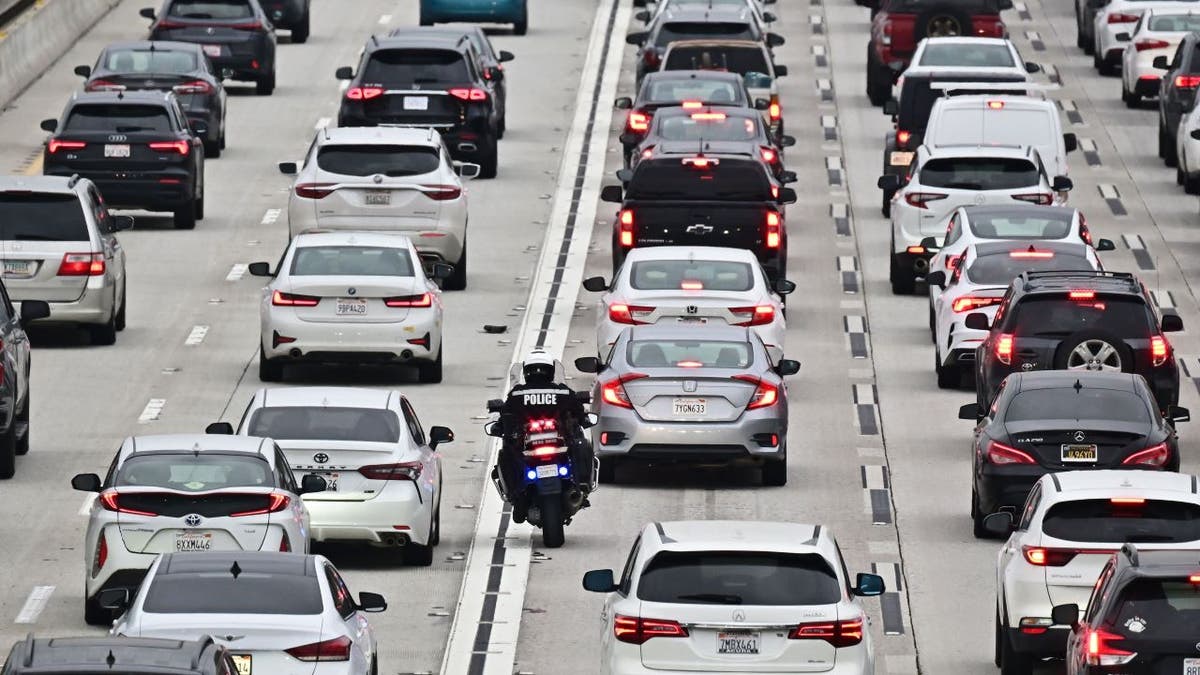Researchers have discovered that one source of cancer-causing chemicals is found in Americans' cars, but there may be a way to reduce the risk.
Environmental Science and Technology, a peer-reviewed scientific journal, published a study Tuesday titled “Exposure to flame retardants in vehicles is influenced by foam use and seat temperature.”
The study explains that Americans breathe chemicals from flame retardants in their vehicles. The chemicals can cause problems ranging from developmental neurotoxicity to thyroid hormone dysregulation and even cancer.
The types of chemicals found in flame retardants range from polybrominated diphenyl ethers (PBDEs), which were common in automobiles until the early 2000s, to alternative brominated flame retardants (BFRs) and flame retardants. of organophosphate esters (OPE).
STUDY FINDS EVIDENCE OF MICROPLASTICS IN THE BRAIN AND OTHER ORGANS
Interior detail of an electric car, taken on August 4, 2015. (Neil Godwin/T3 Magazine/Future via Getty Images)
The federal government requires a level of flame retardants in vehicles. The National Highway Traffic Safety Administration (NHTSA) mandated the use of flame retardants in the 1970s.
“Flame retardant (FR) chemicals are intentionally used in electronics, furniture, and construction materials to meet flammability standards,” the study explains.
STD RATES SOAR AMONG AMERICANS 55 AND OLDER: CDC
“Most [flame retardants] They are used additively (i.e., not chemically linked) and many are semivolatile, indicating that they may be present both in the gas phase and partially in the condensed phase (e.g., particles and surfaces), depending on the environmental conditions.

A motorcycle officer navigates his way through traffic on a Los Angeles freeway during the evening rush hour on April 12, 2023 in Los Angeles, California. (FREDERIC J. BROWN/AFP via Getty Images)
Americans who drive professionally or face long commutes may be at greater risk of harm from chemicals.
“These findings highlight that travelers are likely exposed to [flame retardants]especially those with longer commutes or those who drive vehicles full-time as part of their employment,” the paper reads.
“In addition, children, who breathe a greater amount of air per kg of body weight compared to adults, would also be at risk of greater exposure over equivalent travel times.”
CLICK HERE TO SUBSCRIBE TO OUR HEALTH NEWSLETTER

An interior view of a vehicle on April 2, 2024 in Beijing, China. (VCG/VCG via Getty Images)
Drivers and passengers in warmer states may face a higher risk of inhaling flame retardant chemicals. But rolling down car windows, turning off air conditioning and parking in covered garages can help reduce exposure to dangerous chemicals, researchers say.
CLICK HERE TO GET THE FOX NEWS APP
“Increasing ventilation by opening vehicle windows and preventing recirculation of cabin air may also reduce exposure,” according to the study. “However, the greatest reduction in vehicle air exposure would come from significantly reducing the amount of FRs added to personal vehicles.”
For more health articles, visit www.foxnews.com/health.












